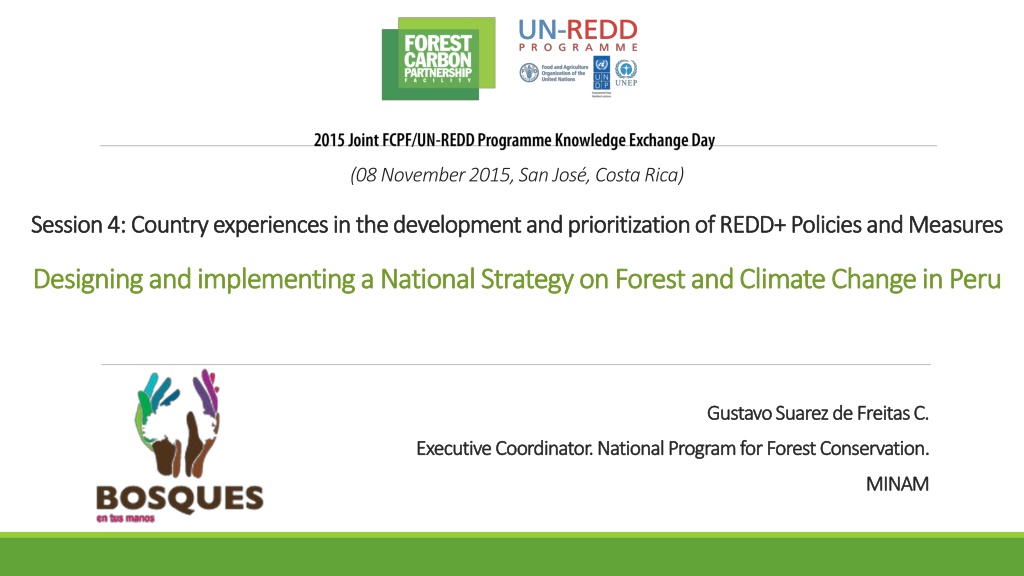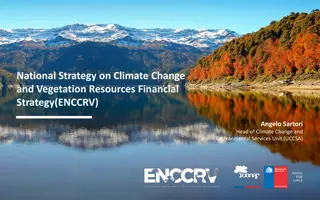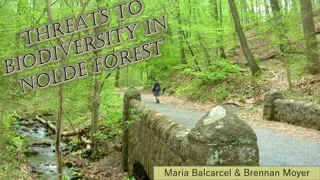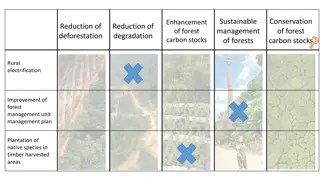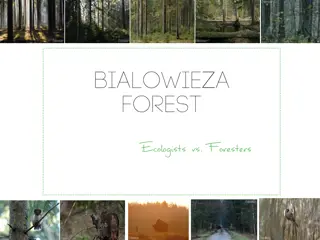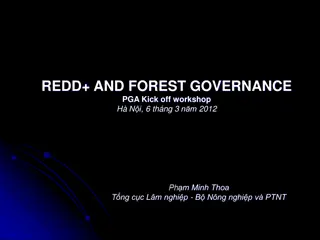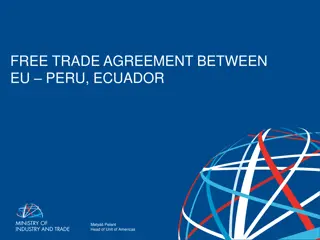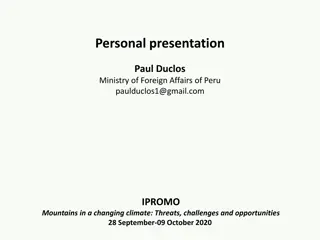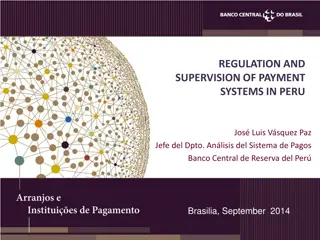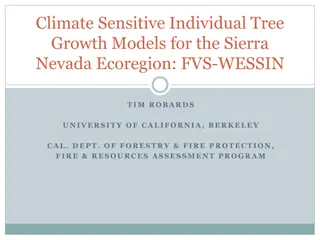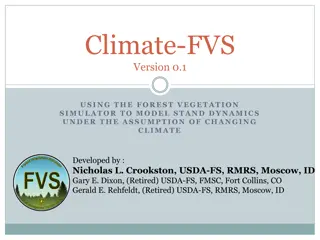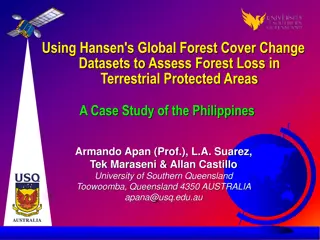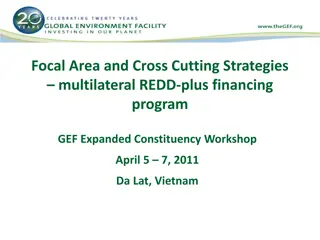National Strategy on Forest and Climate Change in Peru: Design and Implementation
The National Strategy on Forest and Climate Change in Peru, led by Gustavo Suárez de Freitas C., focuses on a process to combat deforestation through consensus building. It includes a planning phase, a document outlining deforestation causes and policies, and aims to become a legally binding instrument. The strategy involves multi-sectorial participation and integration into national and regional development plans.
Download Presentation

Please find below an Image/Link to download the presentation.
The content on the website is provided AS IS for your information and personal use only. It may not be sold, licensed, or shared on other websites without obtaining consent from the author. Download presentation by click this link. If you encounter any issues during the download, it is possible that the publisher has removed the file from their server.
E N D
Presentation Transcript
(08 November 2015, San Jos, Costa Rica) Session 4: Country experiences in the development and prioritization of REDD+ Policies and Measures Session 4: Country experiences in the development and prioritization of REDD+ Policies and Measures Designing and implementing a National Strategy on Forest and Climate Change in Peru Designing and implementing a National Strategy on Forest and Climate Change in Peru Gustavo Suarez de Freitas C. Gustavo Suarez de Freitas C. Executive ExecutiveCoordinator Coordinator. . National NationalProgram Programfor forForest ForestConservation Conservation. . MINAM MINAM
The NSFCC: a process, a document, a legally binding instrument. National Strategy on Forest and Climate Change NSFCC: Is a Process: planning process, learning process, communicational process. As a strategic planning process is a cycle. And a consensus building process. Is a Document: a technical document with relevant information about deforestation (how much, where, who, how (deforestation processes), when, etc. all the silly questions ), and with the identification of the direct and indirect causes and, most important: the policies and measures we need to apply to face deforestation. Is (or, better, will be) a Legally binding instrument: after consensus is reached, government will approve it by a presidential decree ( Decreto Supremo ). So, it could lead to loose the process sense [ muddling through , adaptive management]. The design process must be participatory, including all sectors and actors with influence or concern about forest, forest resources, or develop activities which could impact (directly or indirectly), on the forests.
PUBLIC MACRO POLICIES (f. i. LAND RIGHTS) & GOVERNANCE, NSFCC must be understood as a fully multi- sectorial and intergovernmental process and product (ownership must be share). All sectors must be involved. MINIG, OIL, INFRESTRUCTURE (ROADS, ENERGY) NSFCC must be part of the land use planning at a national and subnational level, as well as part of the national and regional development plans. AGRICULTURE / CATTLE RANCHING We already have some progress: multi- sectorial commission in charge of prepare the Strategy: Ministries of Environment, Agriculture (include National Forest Service), Culture (indigenous people), Economy, and Subnational Governments. FORESTS But it do not includes: Finance, National Planning Center, Mining, Energy, Transport.
Simplify Process Public participatory process (multi- sector commission to conduct the process): includes meetings, inputs from several actors and consensus building process. Technical design (gov. officials + institutions + cooperation, etc.): first draft for consultation process Planning of the process (government agencies + cooperation + key private/NGO partners) NSFCC implementation: Approval process, through public institutions. Legally binding document Develop road maps for each region. Include measures in public budgets at national and subnational levels. Conciliate sectorial policies. Involve private investors. M&E (policies and measures)
Key warnings Approval doesn t mean implemented . If the policies and measures are not in the budget they do not exist. Public funding is probably not enough big to produce transformational changes. So we need to use public and international cooperation funds to leverage private investments: focus on enabling conditions. Several sectors (both public and private) see themselves as loosers , so they opposes changes (need for win-win approaches). The NSFCC is a strategy (answer what and how -in a general form-) not a plan (answer who , when , how in detail-, at what cost , etc.), and it is a general approach for the whole country. It must be follow by subnational and sectorial instruments to apply policies and measures. So is a long process. Political timing is very important.
